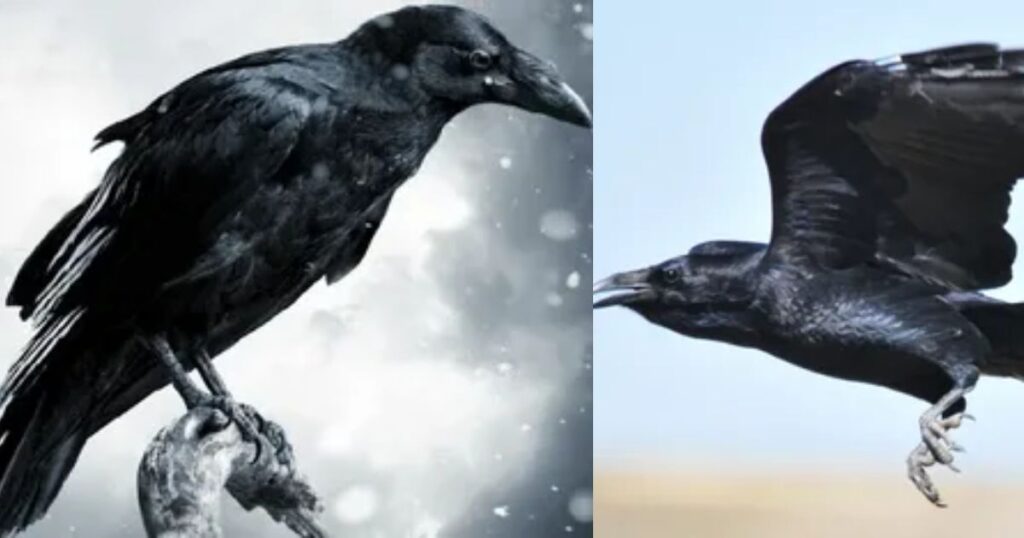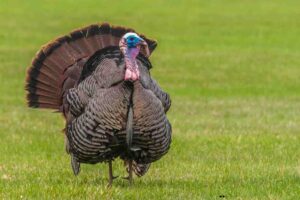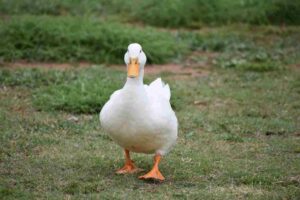When it comes to distinguishing between ravens and crows, size is one of the most noticeable factors. These two intelligent and fascinating birds often get mistaken for each other, but a closer look reveals several differences, especially in their size. This article will help you understand the raven vs crow size comparison while keeping you engaged with fun facts and useful insights.
Raven vs Crow Size: The Basics

Ravens are generally larger than crows. While this might sound straightforward, the size difference can vary depending on the species and region. Let’s break it down:
- Raven Size: Ravens are typically 24-27 inches in length with a wingspan of 46-54 inches. They weigh around 1.5 to 2.5 pounds.
- Crow Size: Crows, on the other hand, are smaller, measuring 16-21 inches in length with a wingspan of 32-40 inches. Their weight ranges from 0.7 to 1.4 pounds.
This raven vs crow size difference is significant enough to notice when they are side by side. Ravens appear bulkier, while crows look sleeker.
Explore more info about: How Long Do Geese Sit on Eggs? Understanding the Nesting Process
Raven vs Crow Size Comparison by Region

In the UK ravens and crows share overlapping habitats, making size a key factor in identification. British ravens, like their counterparts elsewhere, are large, with a robust build and thicker necks. Crows in the UK, often referred to as carrion crows, are smaller and less intimidating.
When observing these birds in the wild, the size difference becomes apparent:
- UK Ravens: Larger and more imposing, often found in rural areas or highlands.
- UK Crows: Smaller, more agile, and commonly seen in urban or suburban environments.
Physical Traits Related to Size
Apart from sheer dimensions, other physical traits emphasize the difference between raven vs crow size:
- Tail Shape: Ravens have wedge-shaped tails, while crows have fan-shaped tails. This becomes more noticeable when the birds are in flight.
- Beak Size: Ravens sport a heavier and larger beak compared to the slimmer beak of a crow.
- Feather Texture: Ravens’ feathers often appear shaggier, especially around the throat, adding to their larger look.
Explore more info about: Can Birds Eat Rice Krispies? Everything You Need to Know
Why Does Size Matter?
The size of these birds affects their behavior and ecological roles. Ravens, with their larger bodies, are more dominant and often outcompete crows for food. They can also take down larger prey or scavenge more effectively. Crows, being smaller, rely on agility and teamwork to thrive.
Conclusion
The raven vs crow size difference is a key identifier for distinguishing these birds. While ravens are larger, bulkier, and more robust, crows are smaller, sleeker, and more agile. By understanding their size and related traits, you can confidently tell them apart during your bird-watching adventures.
FAQs
How can I easily differentiate a raven from a crow?
Look for size! Ravens are larger with a wedge-shaped tail and thicker beak, while crows are smaller with a fan-shaped tail and slimmer beak.
Are ravens found in urban areas like crows?
Ravens prefer rural or less populated areas, while crows are more adaptable and often thrive in urban settings.
Can ravens and crows be seen together?
Yes, but due to the size difference, ravens often dominate in shared territories.
What is the wingspan difference between a raven and a crow?
Ravens have a wingspan of 46-54 inches, whereas crows’ wingspan ranges from 32-40 inches.








